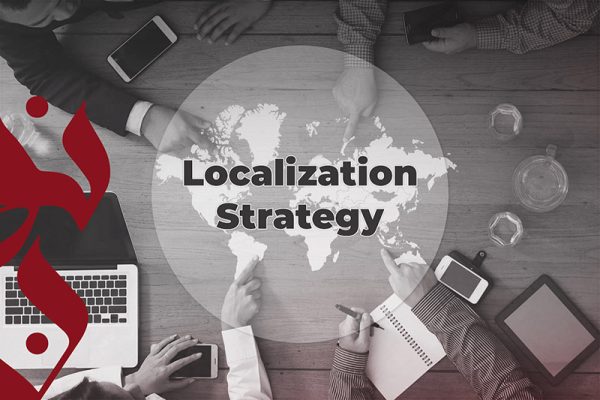Thanks to the internet and advancements in technology, the whole world can now easily be accessed through marketing. However, meeting the proper criteria for mass-targeted marketing has become increasingly difficult, due to cultural diversities and different interests and habits among people from various parts of the world. That produced the need for a more modern approach to be applicable by businesses in order to create an environment suitable for their audiences, in which they would enjoy spending time making their purchases. This, among other important factors, is what makes having a localization strategy more crucial than ever.
What is Localization?
Localization is the process of adapting a text or message to the targeted audience’s language with respect to their culture and preferences. Making the outcome text feel as if written in the target language rather than giving the foreign text feel.
In other words, Localization is a method for constructing content around a personalized experience. And for it to be effective, it should be meticulously planned rather than executed randomly.
What is the difference between translation and localization?
Translation merely transforms a text from one language to another without taking the cultural and social aspects into consideration. For example: If someone is describing two love birds in English, they would say “they’re like Romeo and Juliet”. The Arabic translator can leave the names as they are, but if aiming for localization they should rename them “Qais and Layla” as these two are more embedded in the Arabic audience’s culture and awareness.
Why localize?
- Enter a new market
When planning to enter a new country or market, it is very important to talk local in order to ensure reaching the audience.
- Secure a competitive edge
In order to compete with local and even global competitors targeting the same market, your localization should be smart and seamless.
- Ensure customers satisfaction
Studies showed that over 65% of buyers prefer to shop in their native language. This stems from the sense of security generated by the ability to understand the product’s specifications. So that the buyer is more aware of the aspects of the product they’re buying.
- Increase brand loyalty
Satisfied customers will always come back to a place where the language feels familiar and trusted.
- Maximize the profit
The sales and profit will surely increase by accessing a wider audience base.
What is a localization strategy?
A localization Strategy is a long-term plan to render your content more accessible to local audiences.
This plan will include how the content will be localized, the resources and how they’ll be allocated, and the expected timeline and stages.
The importance of Localization strategies
- Having a localization strategy will help avoid the pitfalls and mistakes that a none planned localization process might face. Like incoherence in content and language in different parts of the website, contradictions in deadlines, omitting parts of the content, and difficulty in applying modifications after each review cycle.
- Having a strategy also helps to use resources in the best way possible. Knowing how many translators, editors, and project managers might go into the project. Deciding on using certain TMs (translation memories), TBs (termbases), and MT engines (machine translation).
- Having a localization strategy will ensure reaching fully localized content. No omissions, your site should be flawless after the plan conclusion.
Steps of the localization process
- Studying the audience and content
It is very important to study the culture of the targeted audience, and know their preferences. In addition to knowing the content type and what specifications the translators might need to know. With these two factors in mind, expert strategists can decide on the tone, language/dialect to use in localization.
- Putting guidelines and allocating resources
Based on the study in the previous step, guidelines are formulated so the work team will know exactly how to handle the content. It also should be decided on how many team members are going to participate in each stage and what other resources to use TBs, TMs, etc.
- Localizing the content
In this stage, the translator or team of translators starts localizing parts of the content while adhering to the style guide.
- Quality Check (QC)
At this stage, a team of QCers or Editors will check if the translations provided by the translation team are correct and if the guidelines are followed correctly.
- Quality Assurance (QA)
QA specialists ensure that the final text contains all the necessary tags for it to display correctly on the website.
- Review and Update
A review of the output of localization must be conducted regularly to see if any changes should be applied to the strategy and guidelines. After updating the plan specifications, the process of localization will repeat until reaching a fully localized content.
Factors that the localization strategy depends on
- Timeframe
The tighter the timeframe the more resources are needed. That is why we always recommend to plan localization as earliest as possible.
- Budget
The budget has a big effect on shaping the strategy.
Attracting customers and visitors from different cultural backgrounds needs more than just translation, it needs efforts driven by the knowledge of their habits, perceptions, and values, as well as their native or commonly spoken language.
Therefore, global communication is necessary for all businesses aiming to thrive in a world filled with tough competitors, demonstrating the importance of localization marketing strategies.
Are you planning to market your products in the MENA region? We are here to help guide you through this process step by step thanks to our long-term experience in localizing content. Contact us for a free consultation!



